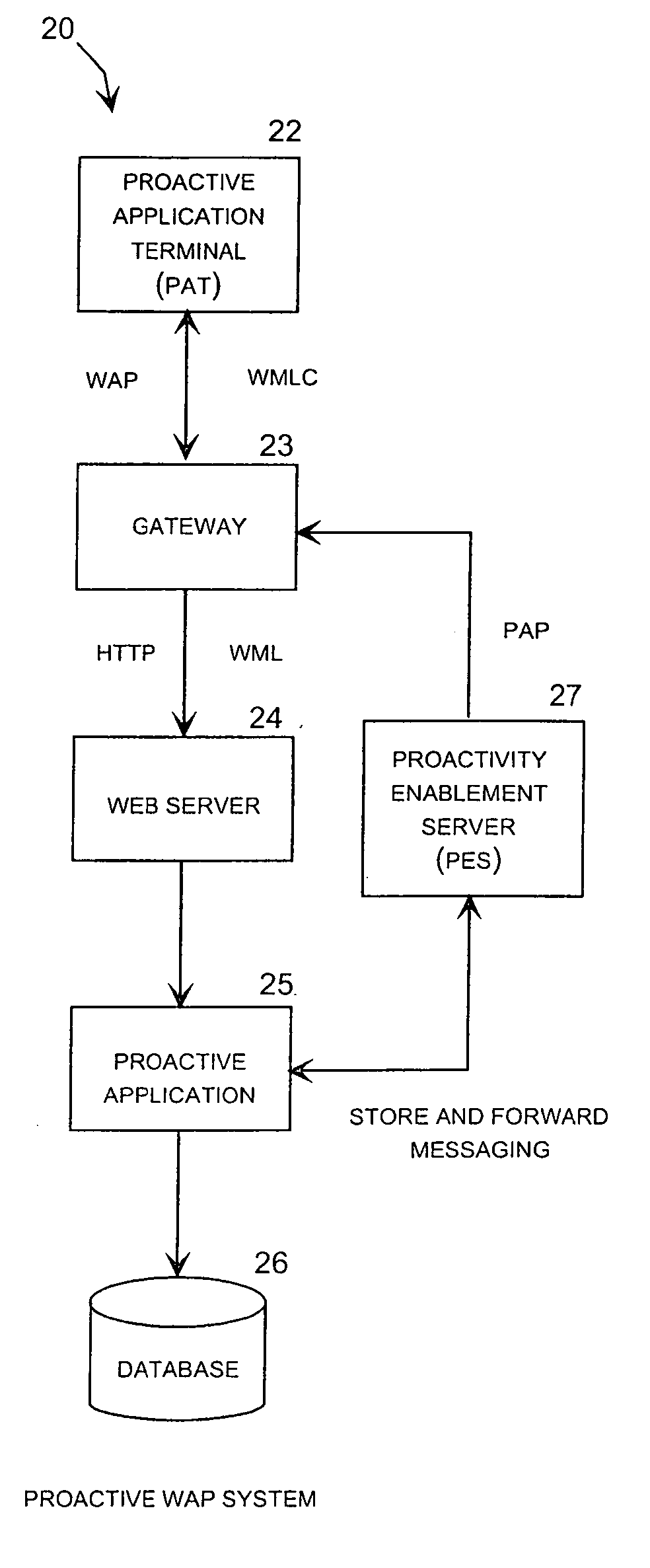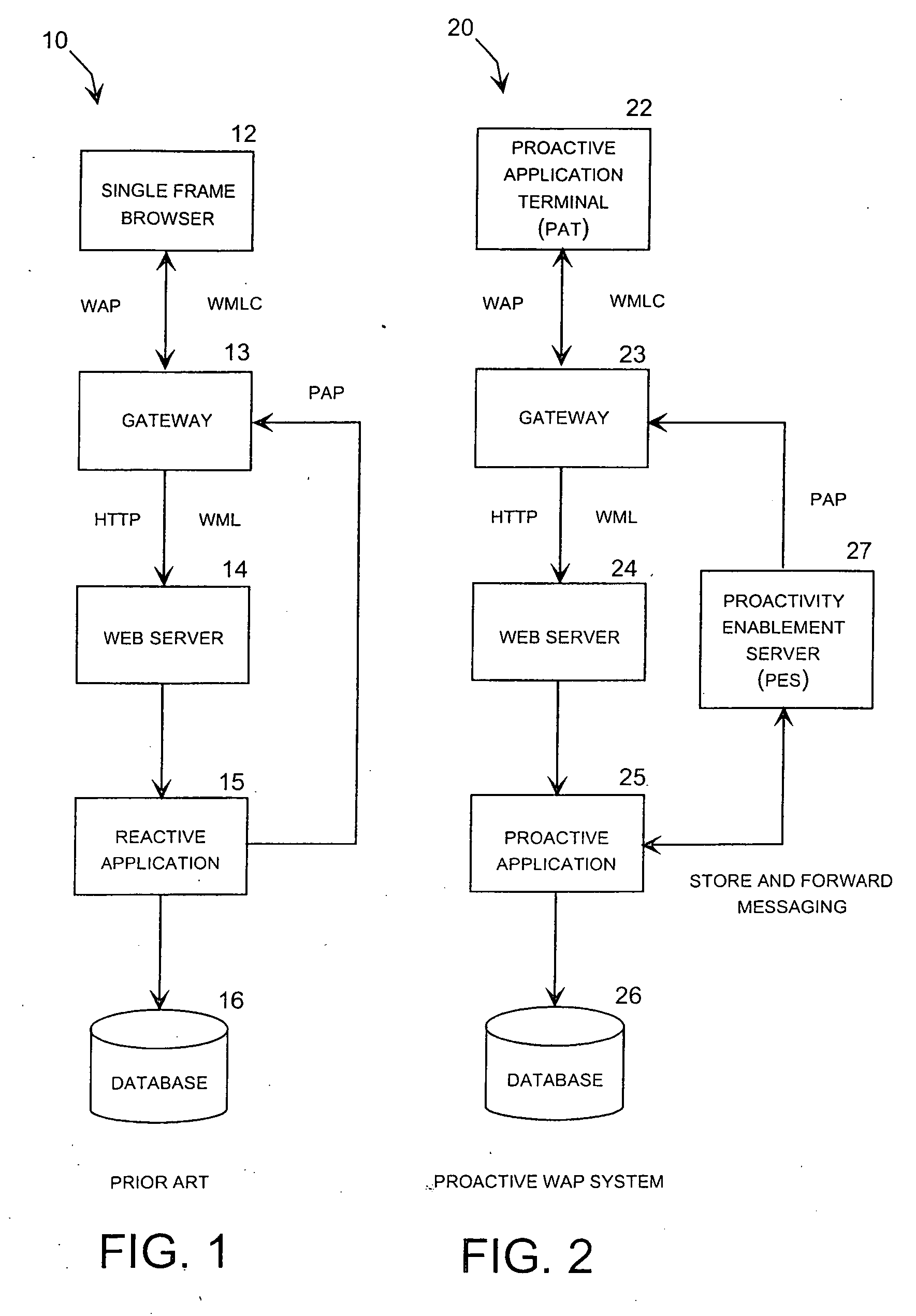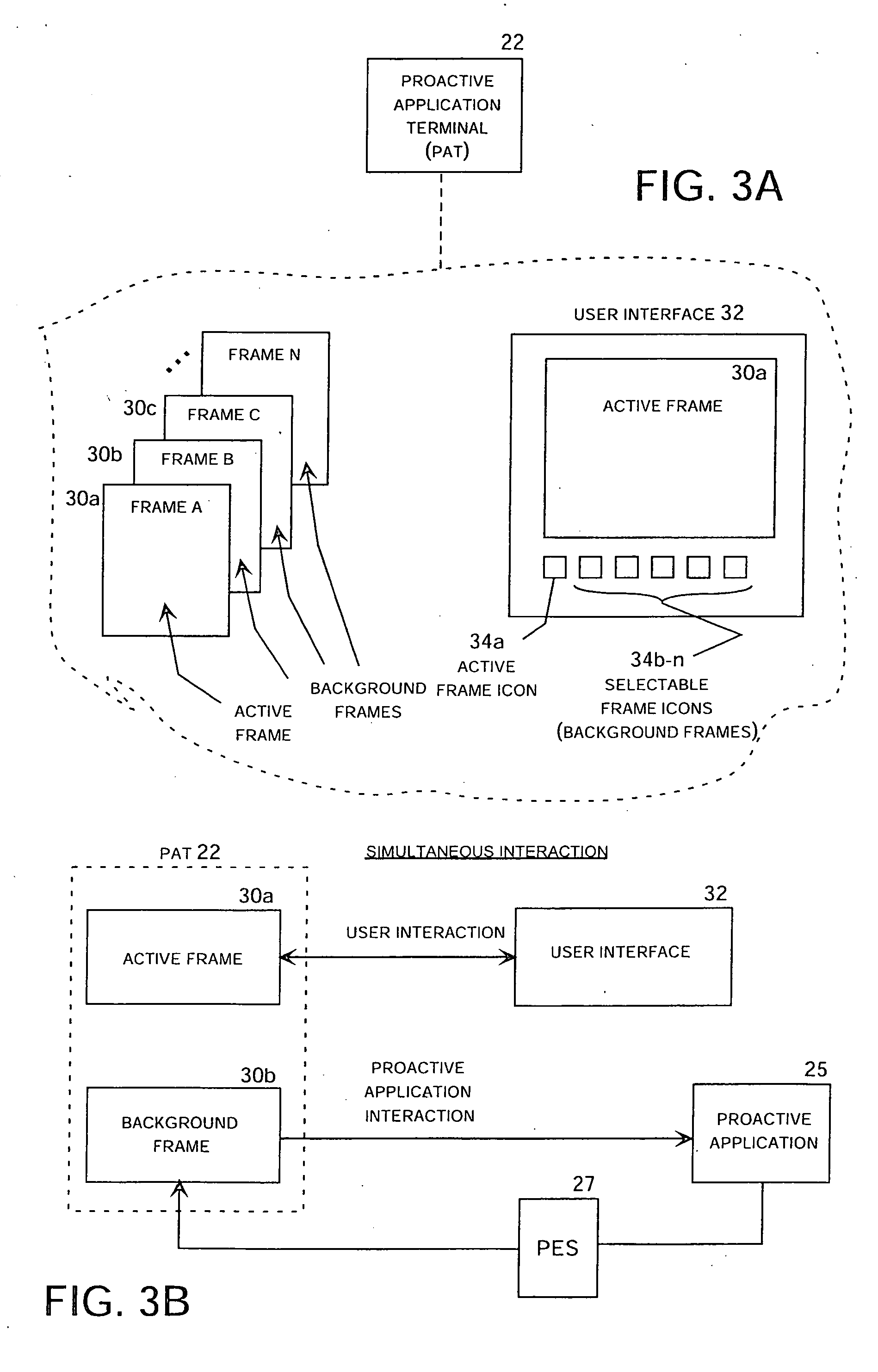Proactive browser system
a browser and browser technology, applied in the field of active browser system, can solve the problems of inability to further accept wireless web-based applications, inability to support sophisticated application functionality, and inability to meet the needs of wireless web-based applications,
- Summary
- Abstract
- Description
- Claims
- Application Information
AI Technical Summary
Benefits of technology
Problems solved by technology
Method used
Image
Examples
Embodiment Construction
[0107] The particular embodiments of the inventions are relying on the Wireless Application Protocol (WAP) standard. It is understood that the present inventions can be implemented by those skilled in art using other technologies, standards and environments. The choice of WAP for these embodiments is not supposed to restrict the general meaning and scope of the present inventions.
[0108] The proactive browser system described in this specification is well suited for deployment as a proactive wireless web-based browser. The implementation of this type of system includes the definition and deployment of a new paradigm for wireless web-based applications that includes a new architecture and related browser, routing and application technology to enable a proactive wireless web-based application system. In particular, the proactive browser system may be implemented as a proactive wireless application system that includes three fundamental components: user-side proactive application termi...
PUM
 Login to View More
Login to View More Abstract
Description
Claims
Application Information
 Login to View More
Login to View More - R&D
- Intellectual Property
- Life Sciences
- Materials
- Tech Scout
- Unparalleled Data Quality
- Higher Quality Content
- 60% Fewer Hallucinations
Browse by: Latest US Patents, China's latest patents, Technical Efficacy Thesaurus, Application Domain, Technology Topic, Popular Technical Reports.
© 2025 PatSnap. All rights reserved.Legal|Privacy policy|Modern Slavery Act Transparency Statement|Sitemap|About US| Contact US: help@patsnap.com



